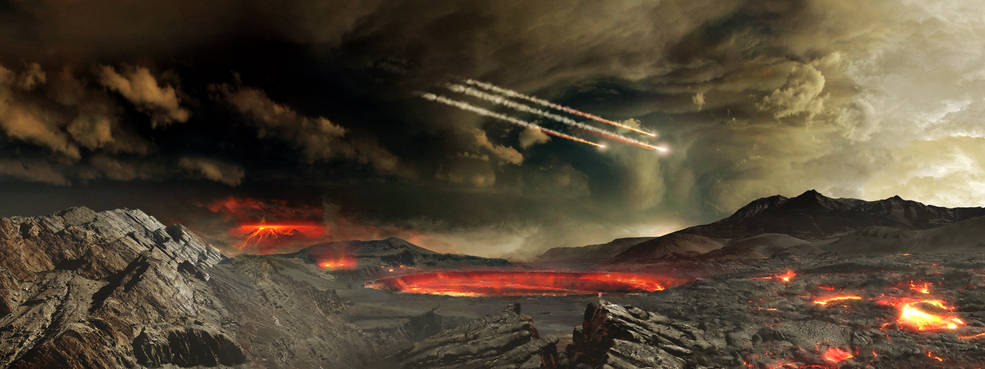Although the exact process by which life formed on Earth is not well understood, the origin of life requires the presence of carbon-based molecules, liquid water and an energy source. Because some Near-Earth Objects contain carbon-based molecules and water ice, collisions of these object with Earth have significant agents of biologic as well as geologic change.

For the first billion years of Earth’s existence, the formation of life was prevented by a fusillade of comet and asteroid impacts that rendered the Earth’s surface too hot to allow the existence of sufficient quantities of water and carbon-based molecules. Life on Earth began at the end of this period called the late heavy bombardment, some 3.8 billion years ago. The earliest known fossils on Earth date from 3.5 billion years ago and there is evidence that biological activity took place even earlier - just at the end of the period of late heavy bombardment. So the window when life began was very short. As soon as life could have formed on our planet, it did. But if life formed so quickly on Earth and there was little in the way of water and carbon-based molecules on the Earth’s surface, then how were these building blocks of life delivered to the Earth’s surface so quickly? The answer may involve the collision of comets and asteroids with the Earth, since these objects contain abundant supplies of both water and carbon-based molecules.
Once the early rain of comets and asteroids upon the Earth subsided somewhat, subsequent impacts may well have delivered the water and carbon-based molecules to the Earth’s surface - thus providing the building blocks of life itself. It seems possible that the origin of life on the Earth’s surface could have been first prevented by an enormous flux of impacting comets and asteroids, then a much less intense rain of comets may have deposited the very materials that allowed life to form some 3.5 - 3.8 billion years ago.
Comets have this peculiar duality whereby they first brought the building blocks of life to Earth some 3.8 billion years ago and subsequent cometary collisions may have wiped out many of the developing life forms, allowing only the most adaptable species to evolve further. It now seems likely that a comet or asteroid struck near the Yucatan peninsula in Mexico some 65 million years ago and caused a massive extinction of more than 75% of the Earth’s living organisms, including the dinosaurs. At the time, the mammals were small burrowing creatures that seemed to survive the catastrophic impact without too much difficulty. Because many of their larger competitors were destroyed, these mammals flourished. Since we humans evolved from these primitive mammals, we may owe our current preeminence atop Earth’s food chain to collisions of comets and asteroids with the Earth.